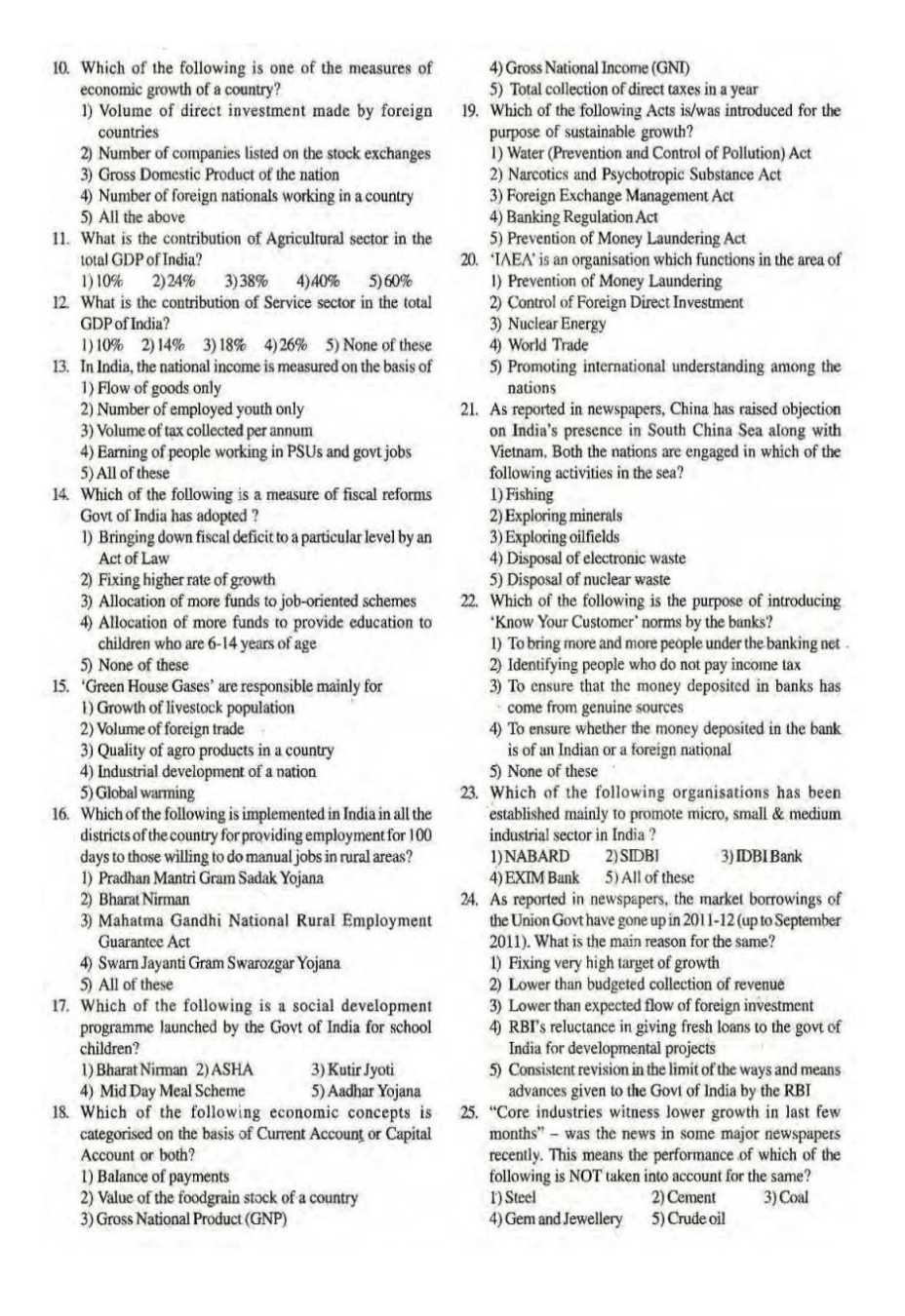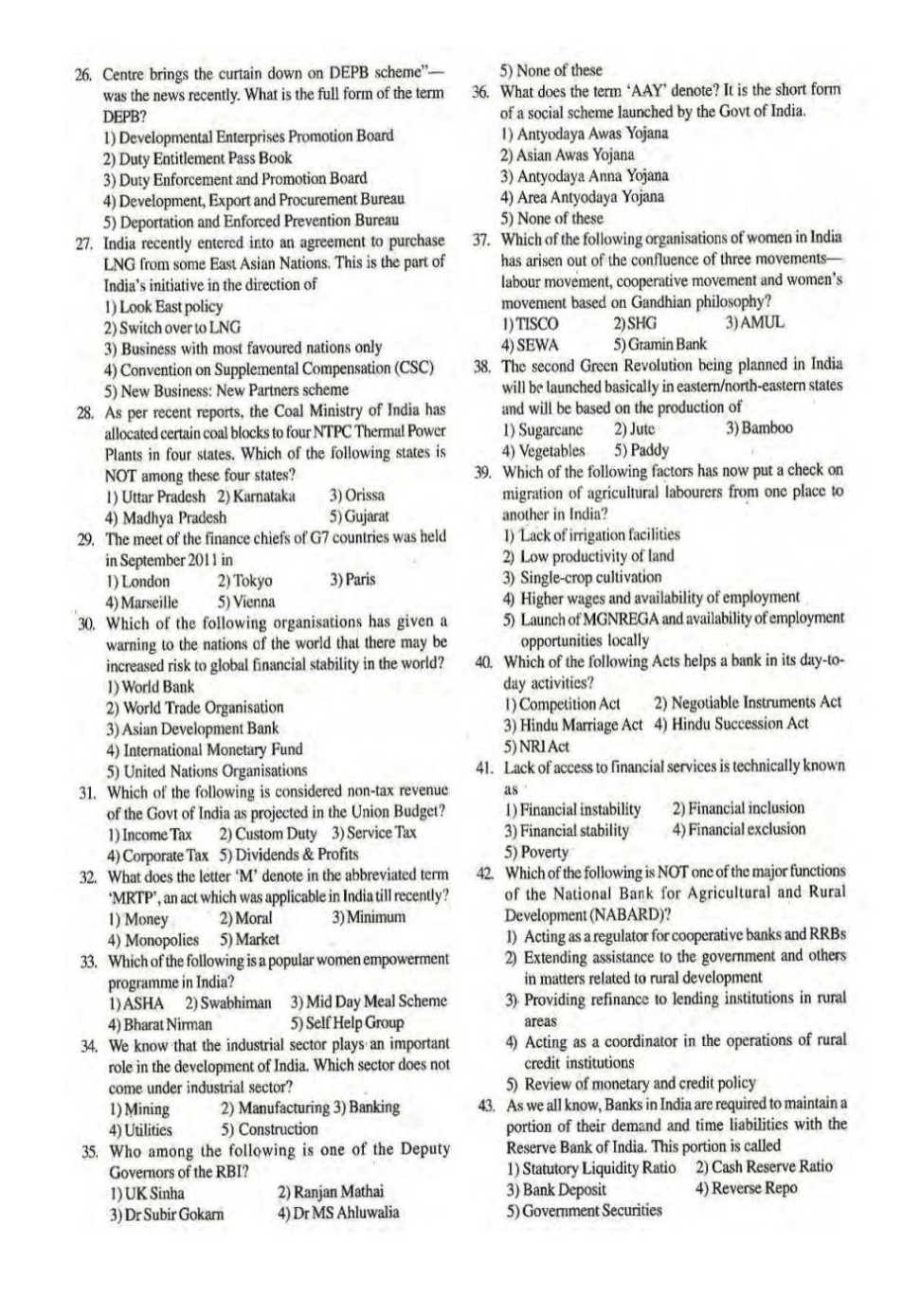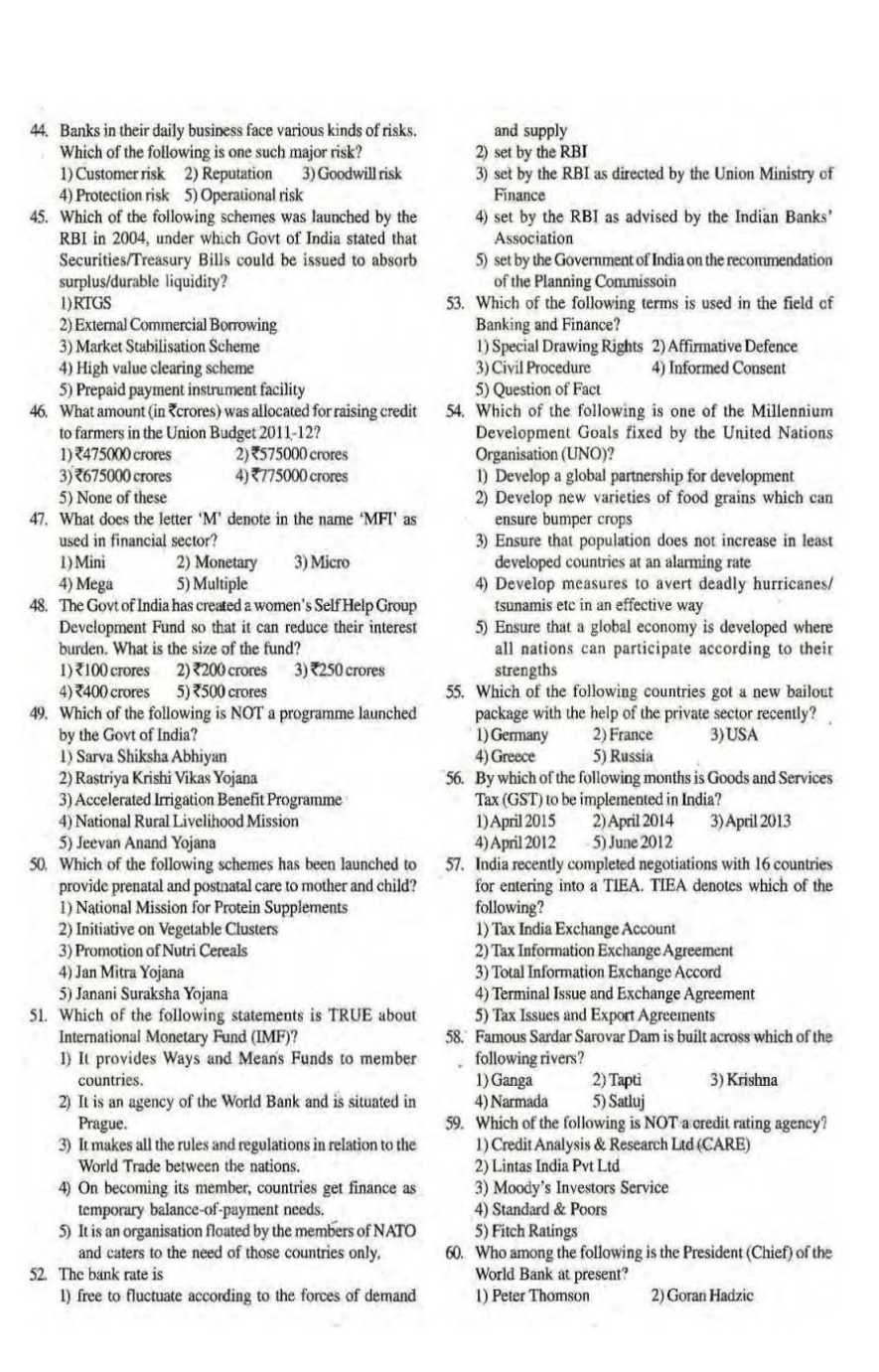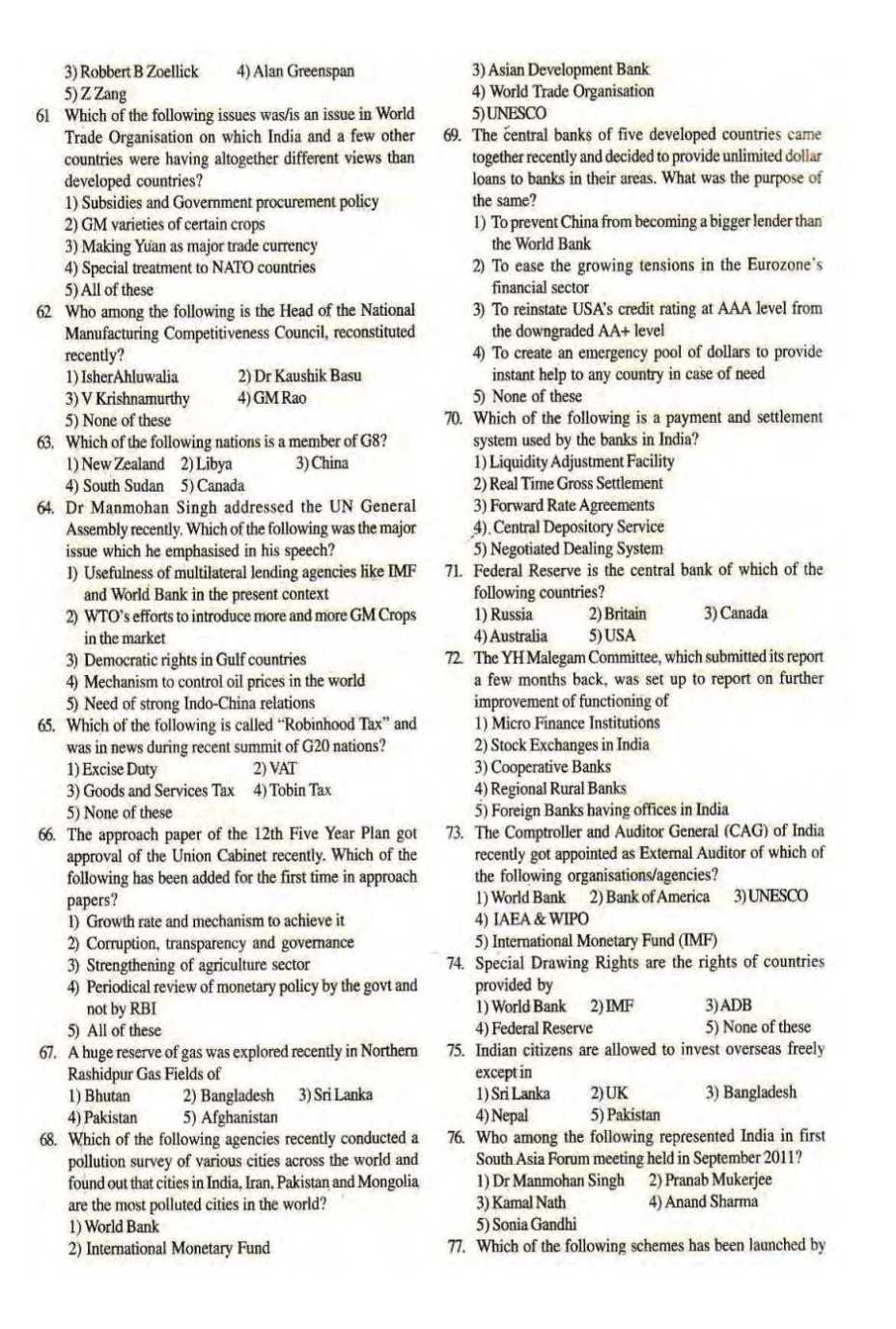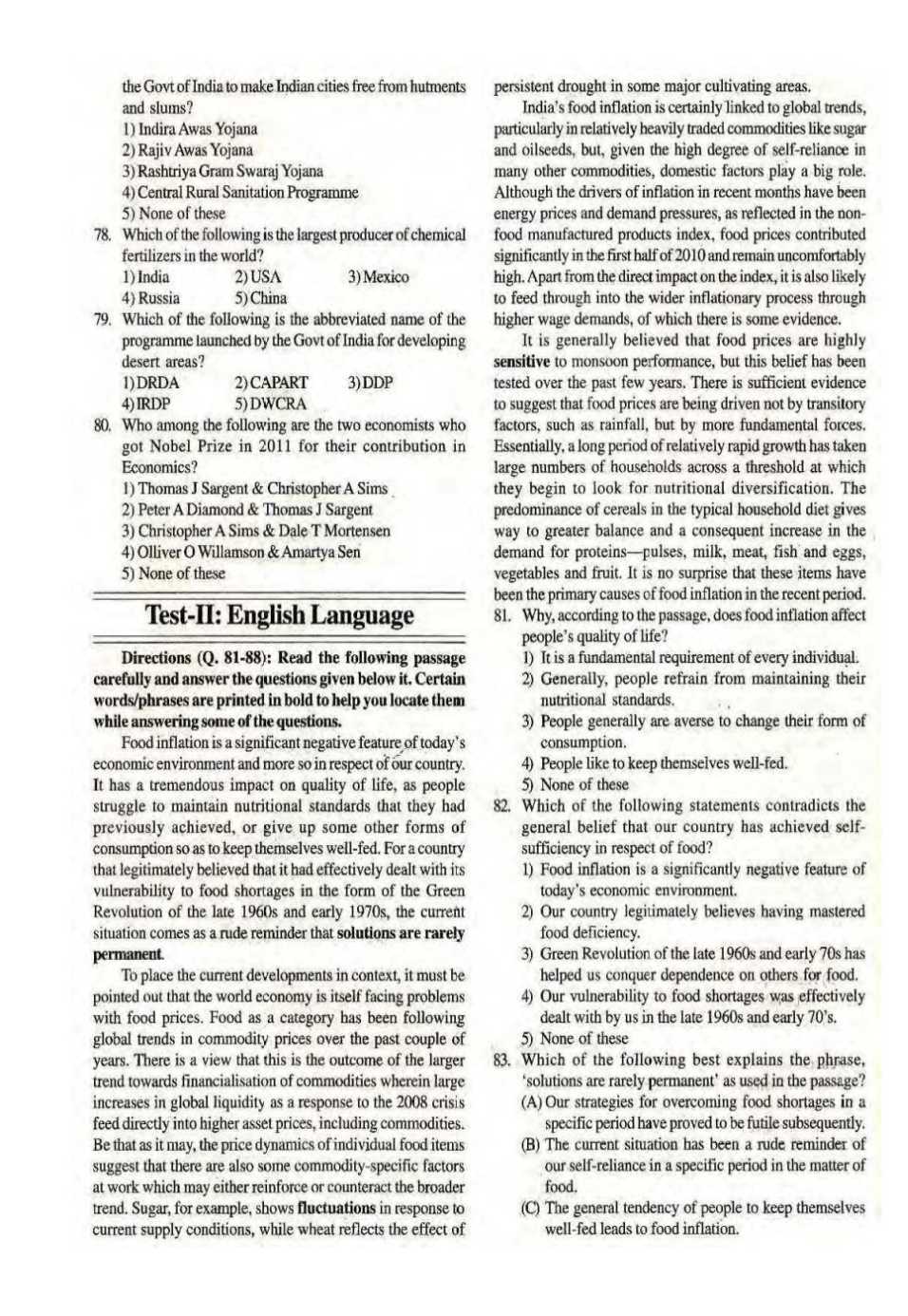| Re: RBI grade B officers mains exam Last years question papers
Here I am providing the list of few questions of RBI Grade B Officer exam question paper which you are looking for .
RBI Grade B Officer exam question paper
PAPER I
ENGLISH
N.B.—(1) All questions are compulsory.
(2) Figures to the right indicate full marks to each question.
(3) Each question should be answered on a new page.
(4) All parts of a question should be answered together, without other
answers intervening.
(5) Marks will be deducted if an answer far exceeds or falls short of the
set limit, or is irrelevant, or if the handwriting is illegible.
(6) Answers must be written only in English.
1. Write an essay of about 500 words on any one of the following :—
(a) Can the Food Security Bill help ?
(b) Has Gold lost its Glitter ?
(c) Sports other than Cricket, are winning us medals today.
(d) How do Hi-Tech gadgets Rule our Lives ?
(e) Environmental disasters are not only due to Global Warming.
(f) Indian Food is popular Worldwide !!
2. (a) Make a precis of the following passage reducing it to about 230
words, and give it a suitable title. Use the precis sheet specially
provided for this purpose :—
What do Indians want and what are their concerns? In the rare
cases where such questions are asked, there are no surprises: price
rise, corruption, job creation, law and order, education and health,
the precise ranking varying from survey to survey.
More than 50% of India’s population is under-25 and there will
be a clutch of new voters in 2014. Priorities of under-25s aren’t
necessarily the same as priorities of those over 65. With gerontocracy
characterising political leadership, there is a disconnect between
what Young India wants and what Old India thinks Young India
wants. Old India lives in yesterday and unfortunately, uses its
prism to deliver policies for tomorrow, when Old India will no
longer be around. Young India will live in tomorrow and will be
hamstrung by policies Old India fashions today.
There are reasons for Young India’s disenchantment. Inflation
is high and at the consumer’s end, unlikely to fall sharply.
Similarly, numbers show a decline in employment generation.
Inflation of 10% matters less if money incomes rise at 10% plus.
It matters more when jobs are scarce, salaries and increments are
lower, there is greater privatised expenditure on health and
education and EMIs become difficult to service. It matters more if
the custodians of public assets are perceived to have interpreted
Marks
40
24
CON 662 2
privatisation in ways that the Washington Consensus did not think
of. It also matters more if the state is seen to be lax in ensuring
its primary responsibility of law and order and justice delivery,
reasons why people around the world elect governments in the
first place.
Anger and angst witnessed on the streets are as much a
manifestation of these underlying reasons than immediate triggers.
Ostensibly, as per the census, only 31% of India’s population is
urban and such concerns may be thought to be representative of
urban Young India, not rural Young India, inhabiting the 6,00,000
Villages. This proposition has doubtful validity. While “urban” and
“rural” have census definitions, India’s evolution over the last
decade is not just about faster urbanisation, it is also about
progressive integration of several “villages” into the mainstream.
Telecom and road connectivity have improved. There is greater
information dissemination. Earlier, a large chunk of migration used
to be within the District. Though migration data becomes available
with a lag, circumstantially, interstate migration has increased.
A characteristic of developed countries is low transaction costs of
migrating to other regions. Though transaction costs are still high
in India, they are probably declining. Politically, patronising
mindsets tend to think of voting populations as being carved up
into collective categories like rural/urban, caste, religion, ethnicity,
even gender. Development breaks down such collective
categorisation into individuals and households. It is aspirations
and expectations that become collective, standardised and universal,
focused on development and governance and provision of public
goods. It can’t be anyone’s case that the churn is already complete,
or that it will manifest itself in 2014 voting patterns.
One dosen’t know whether the structural shift will lead to a
shift in electoral dynamics in 2014. What one does know is that
few political parties and leaders have understood that a shift is
taking place. This is reflected in discourse and debates and will be
reflected in manifestos and vision documents. The Bible states,
“Your young men will see visions, your old men will dream dreams.”
While the old men will dream of coming back to power, it should
be a function of a vision that is sold to Young India of betterment
of lives and economic empowerment, not doles and handouts. It
should be a vision of where we want India to be in 2025, or
beyond. That differentiates 20/20 vision from myopia.
(Extracted from an article by Bibek Debroy in The Economic Times)
(b) Answer any two of the following questions based on the passage
above :—
(i) What are the concerns of Indians ?
(ii) Discuss briefly the reasons for Young India’s disenchantment.
(iii) What is reflected in discourses and debates ?
(c) Use any three of the following phrases in sentences of your own to
illustrate its meaning :—
(i) lives in yesterday
(ii) to fall sharply
(iii) anger and angst
(iv) economic empowerment
(v) differentiate vision from myopia.
20 3. Answer any one of the following in about 250 words :—
(a) The Chairmen of the Reserve Bank has called an urgent meeting
to examine the problem arising from a sudden spurt of fake notes
of denominations of 1000 and 500 in the market. Discuss the
measures suggested to identify and stop this flood of fake currency.
(b) Hoardings pose an environmental hazard and are an ugly sight
in any city. Write an open letter, as a concerned citizen to the
Editor, The Times of India offering your ideas in this matter.
(c) In the wake of online financial frauds and phishing ; the RBI has
decided to send a Circular to all banks to secure the details of the
accounts of their customers and warn them about such risks. Draft
this circular.
| 
